“Koloni”
By HG Masters
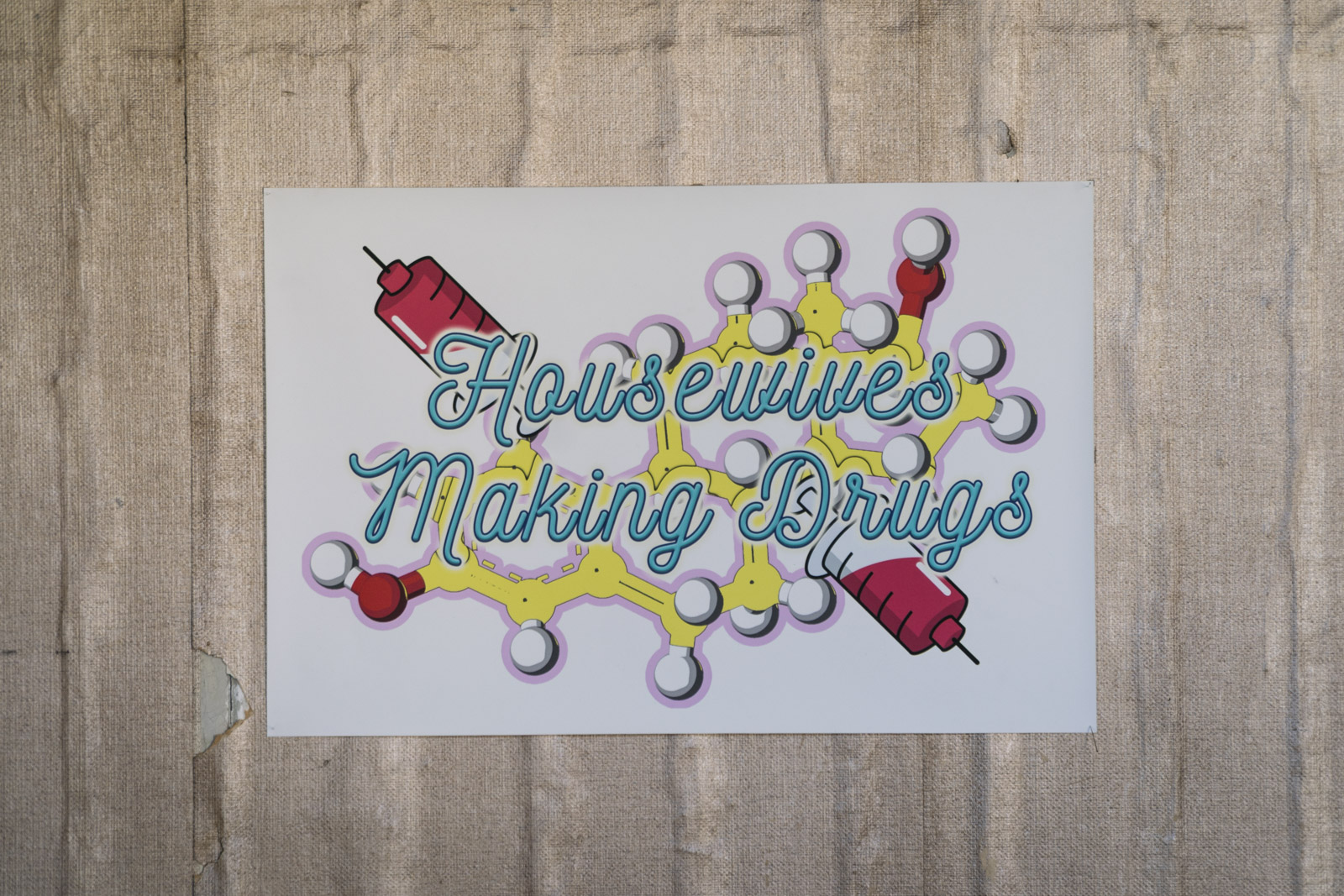
MARY MAGGIC, detail of _I
There was no sign outside the Abu Efendi Mansion (Konağı) announcing the exhibition “Koloni” (“Colony”) held inside the late 19th-century building located just across the tram tracks from the Hagia Sophia (Aya Sofya). Given the metaphorically chilly climate in Turkey—incrementally more repressive every month—the understated presence of the show made sense considering its themes and concerns: curators Kevser Güler, Derya Bayraktaroğlu and Aylime Aslı Demir describe these as “the scope of post-human and queer critique kinship.” For context, in November, Turkey’s capital city Ankara had banned all exhibitions and film screenings with lesbian, gay, bisexual, trans and intersex themes. Since 2015, police have blocked and violently suppressed the once-annual transgender and gay pride parades held in Istanbul. That “Koloni” was the biennial exhibition of the Kaos Gay and Lesbian Cultural Research and Solidarity Association (known as Kaos GL and based in Ankara) could only have been inferred from the copies of the organization’s magazine available on a table in the building’s foyer.

DYNASTY HANDBAG, (H)ey, Sinek kus
The artworks of “Koloni” similarly vacillated between explicitness and obscurity. Despite modest external promotion, at the same time, curators didn’t hold back in presenting overtly queer or trans themes to those who had ventured past the security guard. The ground floor, for instance, featured a video by Dynasty Handbag, Oh, Hummingbird (2017), a psychedelic music video starring artist Jibz Cameron’s alter ego wearing a nude suit drawn with female genitals while singing a ballad about a hummingbird having to navigate a polluted natural environment. You couldn’t miss the sound of Dynasty Handbag’s singing, though the small monitor was placed on the floor, perhaps obscuring details of her outfit unless you crouched down.
Upstairs, the negotiation between overtness and obliqueness continued in nuanced ways, as artists represented bodies in various kinds of transition or transformation. Nilbar Güreş’s embroidered and painted diptych work, entitled Vaginal Fisting (2014), again required close inspection to see just how she visualized the titular action by hybridizing floral and biological imagery into small figures collaged on blue-striped textile (I noted that in the exhibition map, the title was not translated into Turkish). In a tiny adjacent room was a pair of black nylon pants with a bright pink belt, its crotch melted away in sections—Güreş’s Queer Desire Is Hot (2017)—which, by comparison, seemed like simplistic declaration. Chemical transformations are the subject of Mary Maggic’s video Housewives Making Drugs and accompanying diagram on paper Open Source Estrogen Mind Map (both 2017). The video features two trans-femme stars, Maria and Maria (played by Jade Phoenix and Jade Renagade), who in a mock live cooking show demonstrate how to synthesize estrogen from urine, providing instructions for those who want or need to pursue a DIY hormone treatment. Moving even further into the post-human territory was Daria Martin’s 16 mm film Soft Materials (2004), which was shot in the Artificial Intelligence Lab at the University of Zurich, and captured two nude performers (one man, one woman) trained in “sensory awareness,” interacting with the robotic machines in dance-like routines or intimate touching.
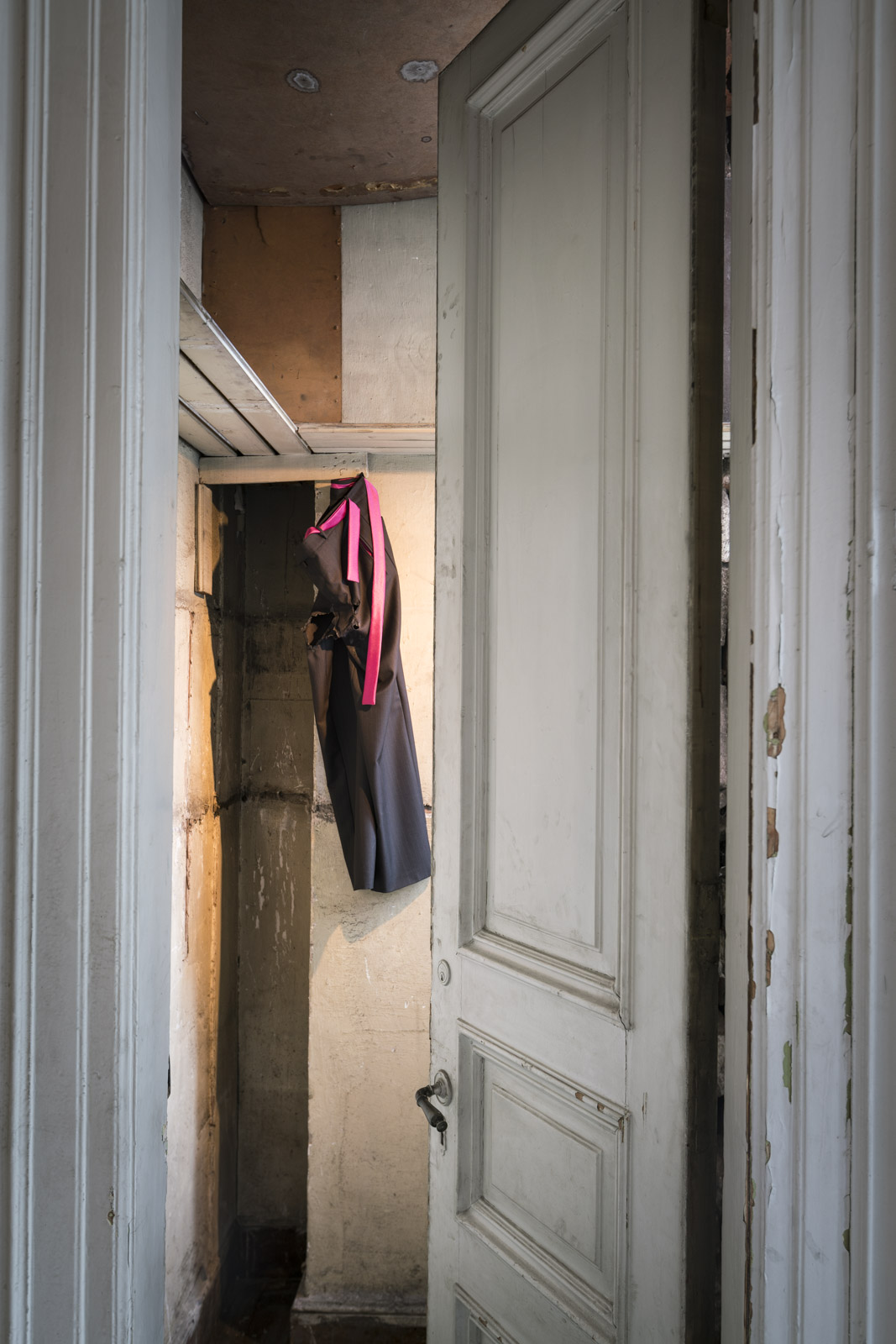
*NILBAR G
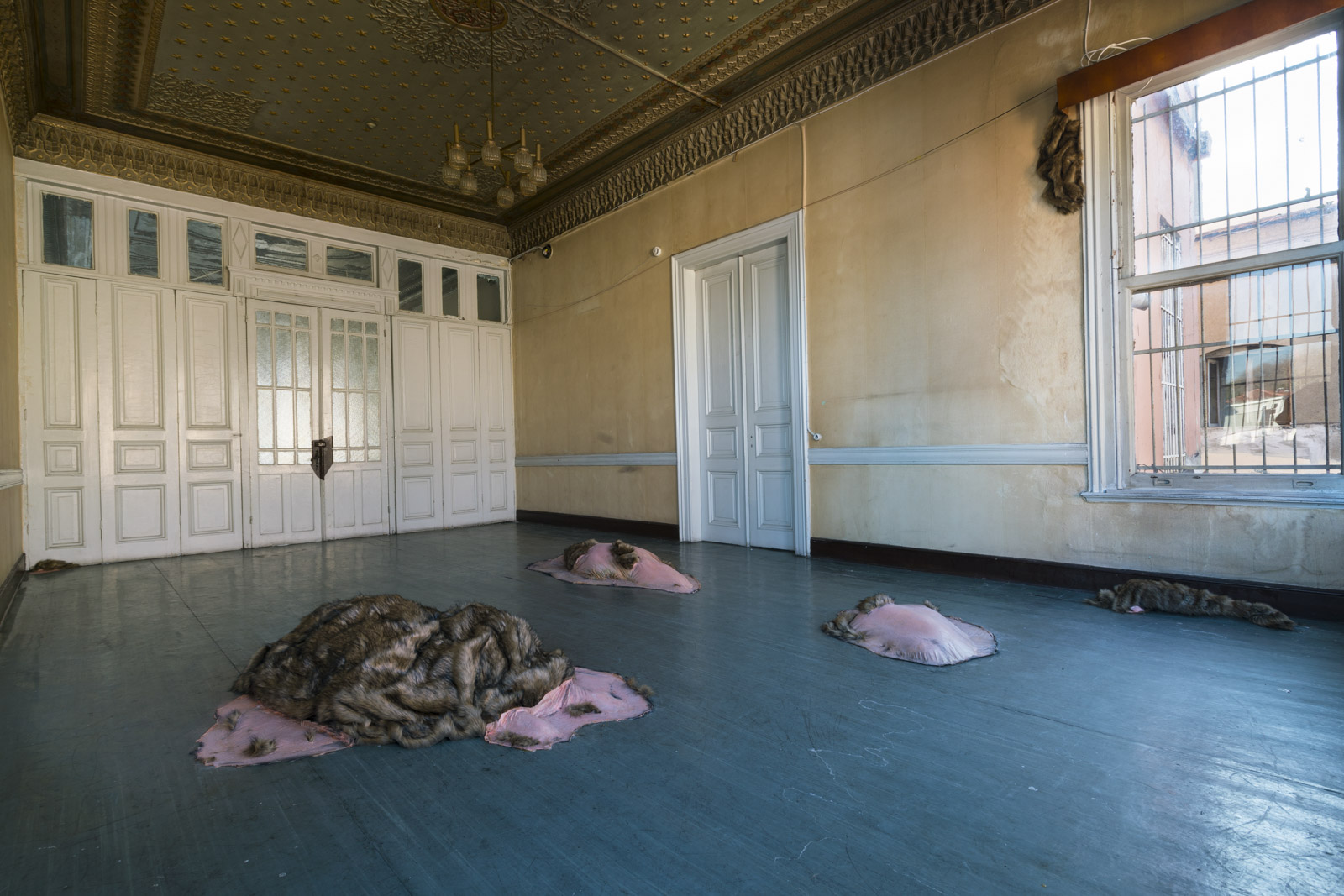
*I
Back in the more esoteric direction were İris Ergül’s Vertebrae (2017), which is a set of amoebic-looking islands of latex and fake fur rising up from the floor—resembling both human and animal parts, internal organs and exteriors. The events in Gökçe Yiğitel’s video recording of a two-hour performance Proteus (2017) were hard to discern in the sunlit space, but the physical remnants involved an audio recording of a 12-minute guided meditation and an “incubation site” comprising a piece of glass, where various bacterial growths were encased in agar and labeled. Also deploying a piece of glass as its surface was Yavuz Erkan’s messy, painterly composition of diverse materials—including “kidney stone(s) of a mother,” “home-grown K3[Fe(CN)6] (Potassium Ferricyanide) single crystal(s),” “broken piece(s) of a brown glass bottle,” bleach and apple cider vinegar, and the handle of a black plastic bag—which had an enigmatic appeal.
Birds—and post-internet aesthetics—returned in several works on the second floor upstairs, including Katja Novitskova’s massive photographic cut-out (sourced online) of a red bird’s curling beak and head, Approximation Mars I, “Assemblage Version” (2014), which sits on a bed of correspondingly bright-red aquarium pebbles and blurs all the lines between the natural and artificial realms. Similarly exploring the crossovers between nature and scientific study, Ursula Mayer’s film Atom Spirit (2016–17) imagines a quasi-futuristic, female-led team of scientists collecting DNA from natural locations in Trinidad and Tobago—including from hummingbirds. Meanwhile, Kerem Ozan Bayraktar’s Mimicry (2017) installation and video depicts a flower production factory that is more online retail fulfillment center than greenhouse.
Looking to the past for possible models for the future, İz Öztat installation works were from her “Posthumous Production” series by an alter-ego named Zişan, who was involved (or was imagined to be involved) with early 20th-century avant-garde circles in Europe as well as Turkish socialist groups. These works take the form of various woven cane sculptures, including one visualizing Nietzsche’s idea of the “eternal return” and a hanging woven lattice stitched with the word “Utopie.” Psychosexual dystopias were evoked Erinç Seymen and Uğur Engin Deniz’s pair of digital works. Each is a looping, animated drawing in Seymen’s fastidious style, with surrealist, nightmarish imagery: a mass of bodies pouring from the windows of a school-like building; an amorphous creature comprised of flowers, leaves and human hands holding a ruler and a knife.
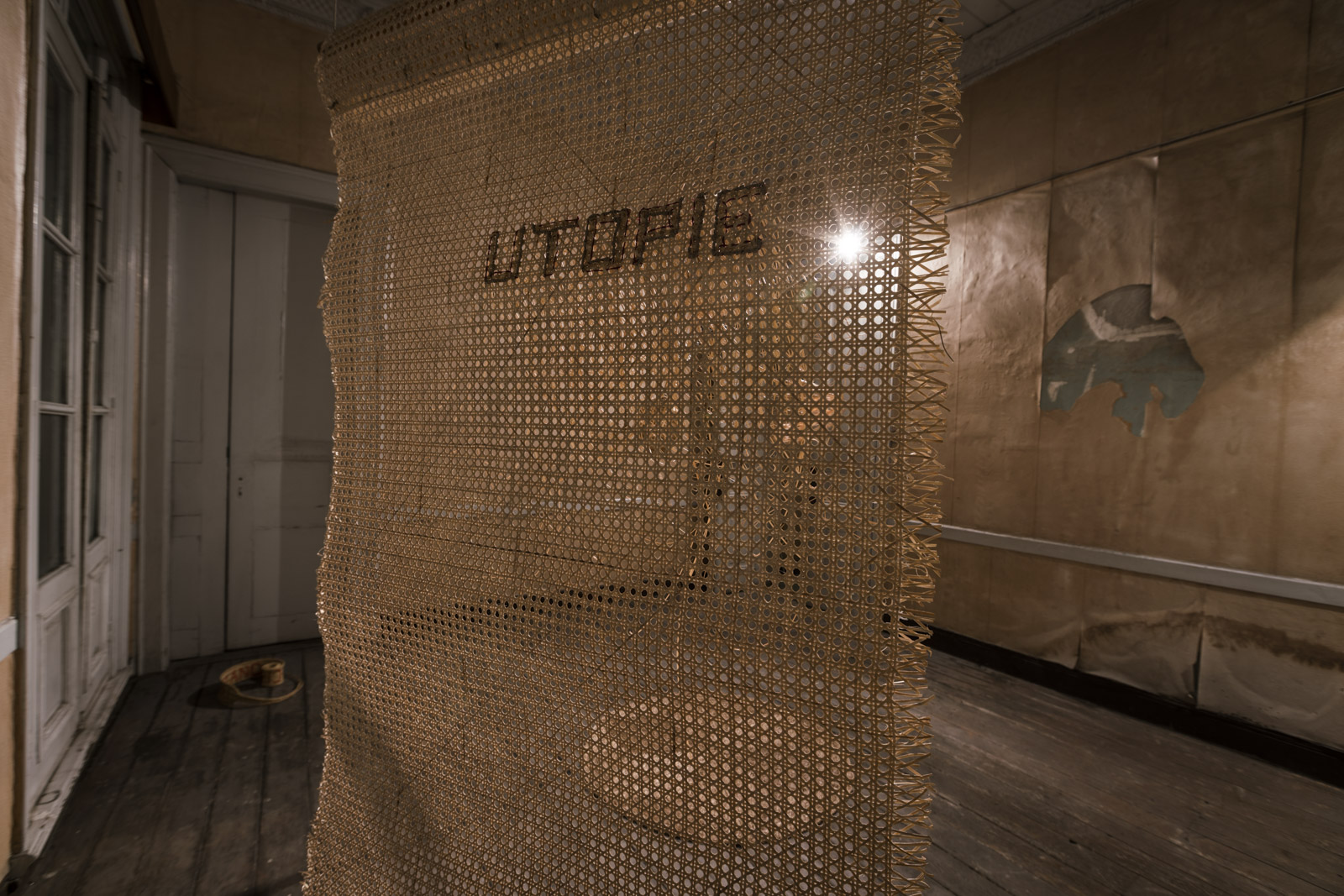
*I
Even more difficult to parse—particularly in the absence of texts about the works—were Yasemin Nur’s installation Permeate (2017), a room-installation of squares of old pieces of paper arrayed on old wooden furniture and boxes, and Umut Yıldırım’s booklet resting on a red bench with red buckets of soil beneath it. The latter, titled Lungs (2017), contained poem-like lists of related things—AK-47, M16, RPG-7, for example; or various kinds of vegetables and grains—in what was described in the caption as an “inventory,” though it was unclear of what.
The significance of other works might have also passed me by if I hadn’t gleaned certain biographical or contextual subtexts from friends’ explanations. On the building’s top floor, for instance, a video work by the filmmaker collective İyi Saatte Olsunlar (“Let the Good Times Roll”), titled Raskol’s Axe (2013), is a music video of a drag performer lip-synching the 1978 song Melankoli by the diva Nükhet Duru. The video was directed by the late Boysan Yakar, who was one of the co-founders of the group, and who was known for his work as a mayoral advisor in a prominent city municipality on LGBTI issues, making him one of the only openly gay figures in Turkish politics. He and two other LGBTI activists died tragically in a car accident in September 2015. The show contained another kind of memorial, also hiding in plain sight, in the form of a newspaper sitting on an old armchair in the front foyer, that I only saw on my way out. Aykan Safoğlu’s project The Ark (2017) consisted of the artist placing remembrance ads in Turkish newspapers that—as far as I understood them—read as poetic, personal memories compared to the formal announcements surrounding them, made by families or corporations of the recently deceased.
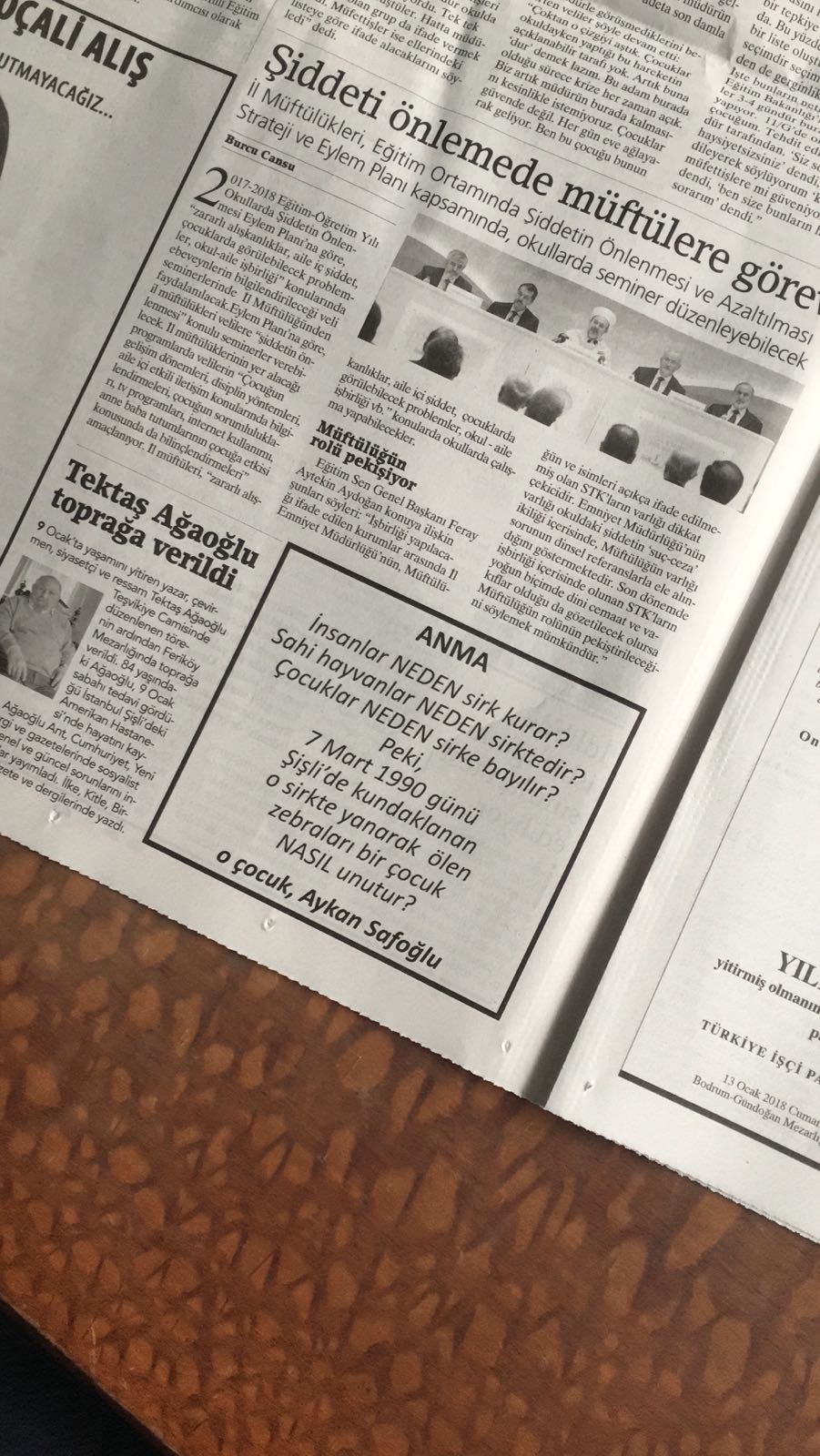
*Aykan Safog
Safoğlu’s work, like many others in “Koloni,” positioned itself in a paradoxical space: readily visible and yet largely inscrutable, at least on an initial glance or to those inadvertently coming across them. “Koloni” itself, as with many recent cultural events and exhibitions in Turkey—including the last two editions of the Istanbul Biennial—revealed how progressive organizations, curators and artists alike are figuring out how to avoid unwanted attention from the forces of emboldened chauvinism and ethno-militarism that dominate public life in Turkey today. While this increasingly restricted space compels artists and the cultural community to be more savvy in their presentation of challenging materials—and most likely to engage in even more forms of self-censorship than before—the accessibility and legibility to the wider public of such cultural events has severely diminished. But at this point in time, even the simple fact of survival for boundary-exploring intellectual and cultural events like “Koloni” remains an achievement.
HG Masters is the editor at large of ArtAsiaPacific.
“Koloni” is on view at Abud Efendi Konağı, Istanbul, until February 3, 2018.







